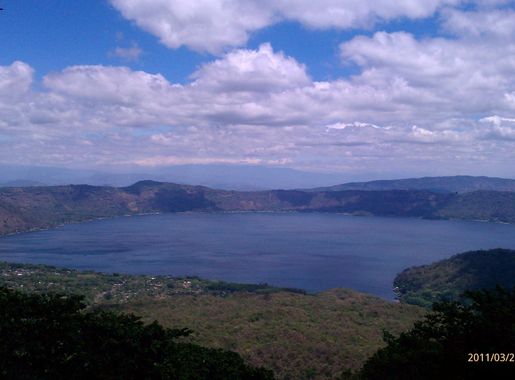
The Serene Beauty of Lake Coatepeque
Discover Lake Coatepeque: A tranquil crater lake in El Salvador, perfect for swimming, kayaking, and enjoying local cuisine amidst stunning natural scenery.
Nestled in the heart of El Salvador, Lake Coatepeque is a hidden gem that offers visitors a tranquil escape from the bustling city life. This stunning crater lake, formed by a volcanic eruption over 50,000 years ago, is surrounded by lush green hills and provides a perfect setting for relaxation and adventure. The crystal-clear waters of Lake Coatepeque are ideal for swimming, kayaking, and paddleboarding. For those looking to explore beneath the surface, diving opportunities abound, revealing a fascinating underwater world. The lake is also a popular spot for fishing, where you can catch a variety of local fish species. Around the lake, you'll find charming restaurants and cafes offering delicious local cuisine and breathtaking views of the water. Whether you're enjoying a meal of fresh seafood or sipping on a cold beverage, the ambiance is unbeatable. Don't miss the chance to take a boat tour around the lake to fully appreciate its size and beauty. For a cultural touch, visit the nearby town of Santa Ana, where you can explore historical sites, local markets, and experience the vibrant Salvadoran culture. Lake Coatepeque is not just a destination; it's an experience that combines natural beauty, adventure, and cultural richness.
Local tips in Lake Coatepeque
- Visit early in the morning to avoid crowds and enjoy the peaceful surroundings.
- Bring sunscreen and a hat as the sun can be quite strong, especially during midday.
- Try the local fish dishes at lakeside restaurants for a taste of authentic Salvadoran cuisine.
- Rent a kayak or paddleboard to explore the lake at your own pace.
- Consider taking a boat tour to see the entire lake and learn about its volcanic origins.
The Serene Beauty of Lake Coatepeque
Nestled in the heart of El Salvador, Lake Coatepeque is a hidden gem that offers visitors a tranquil escape from the bustling city life. This stunning crater lake, formed by a volcanic eruption over 50,000 years ago, is surrounded by lush green hills and provides a perfect setting for relaxation and adventure. The crystal-clear waters of Lake Coatepeque are ideal for swimming, kayaking, and paddleboarding. For those looking to explore beneath the surface, diving opportunities abound, revealing a fascinating underwater world. The lake is also a popular spot for fishing, where you can catch a variety of local fish species. Around the lake, you'll find charming restaurants and cafes offering delicious local cuisine and breathtaking views of the water. Whether you're enjoying a meal of fresh seafood or sipping on a cold beverage, the ambiance is unbeatable. Don't miss the chance to take a boat tour around the lake to fully appreciate its size and beauty. For a cultural touch, visit the nearby town of Santa Ana, where you can explore historical sites, local markets, and experience the vibrant Salvadoran culture. Lake Coatepeque is not just a destination; it's an experience that combines natural beauty, adventure, and cultural richness.
When is the best time to go to Lake Coatepeque?
Iconic landmarks you can’t miss
Parque Nacional Cerro Verde
Explore the breathtaking landscapes and rich biodiversity of Parque Nacional Cerro Verde in El Salvador, a true natural gem for adventure and relaxation.
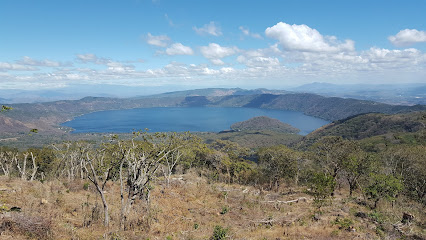
Parque Arqueológico Tazumal
Discover the ancient Mayan civilization at Parque Arqueológico Tazumal, a stunning archaeological museum in Chalchuapa, El Salvador.
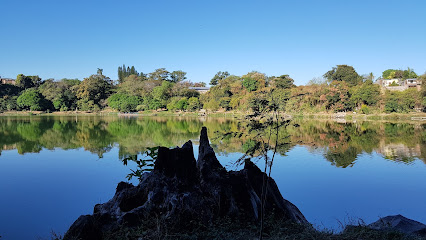
La Pampa Restaurant
Experience authentic Argentinian flavors and exceptional steaks at La Pampa Restaurant in El Congo, a culinary delight for every traveler.
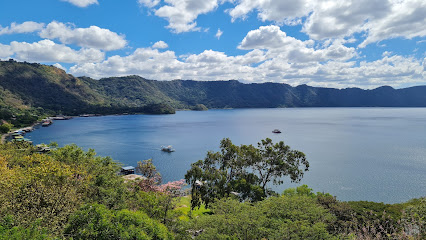
Restaurante Las Palmeras
Experience authentic Salvadoran cuisine at Restaurante Las Palmeras, where stunning lake views meet delicious local flavors in a welcoming atmosphere.
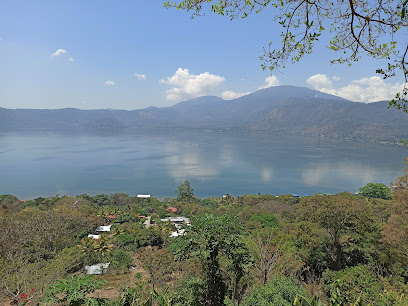
Lago de Coatepeque
Discover the breathtaking beauty of Lago de Coatepeque, a stunning volcanic lake in El Salvador perfect for relaxation and outdoor adventures.
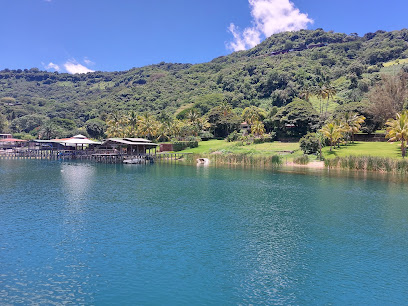
La Octava Maravilla Restaurante & Bar
Experience the culinary delights and breathtaking views at La Octava Maravilla Restaurante & Bar by Lago de Coatepeque, a true Salvadoran gem.
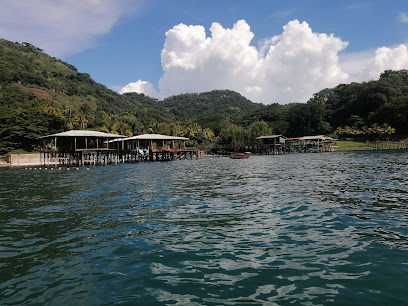
Cardedeu Hotel
Experience the serene beauty and modern comforts of Cardedeu Hotel in Coatepeque, your perfect getaway in El Salvador.

Captain Morgan Hostel
Discover the charm of El Salvador at Captain Morgan Hostel, your gateway to adventure in the heart of Santa Ana.
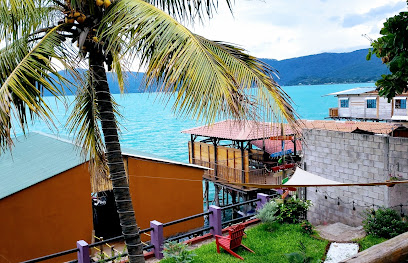
Cardedeu Residence
Discover tranquility and comfort at Cardedeu Residence, your perfect getaway in the heart of Santa Ana, El Salvador.
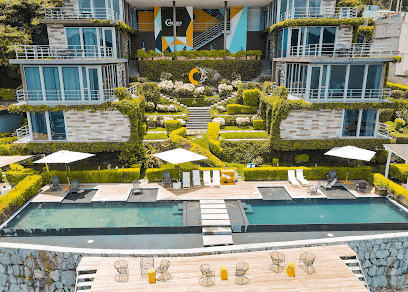
Rancho Alegre Coatepeque
Savor the essence of El Congo at Rancho Alegre Coatepeque, where delicious local cuisine meets stunning natural beauty for an unforgettable dining experience.
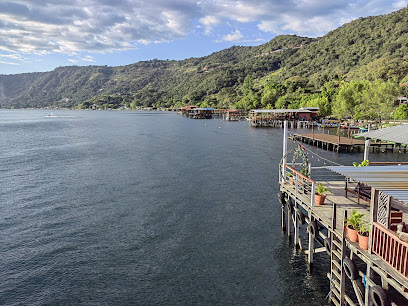
Club de El Salvador
Explore the beauty and cultural richness of Club de El Salvador, a captivating tourist attraction in El Congo offering nature, recreation, and local flavors.
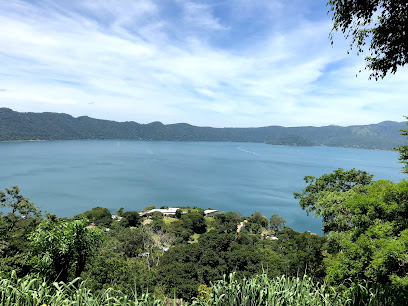
Lajamaya, Lake Coatepeque
Discover Lajamaya at Lake Coatepeque, where adventure meets tranquility in an idyllic aquatic paradise.
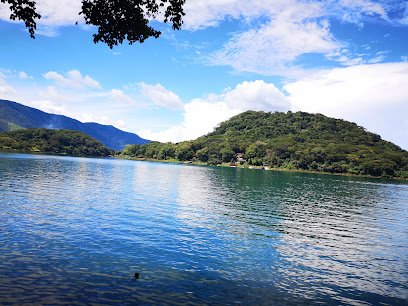
Equinoccio Hotel
Discover comfort and local charm at Equinoccio Hotel in Santa Ana, El Salvador, your gateway to stunning landscapes and rich culture.

Isla Teopán
Discover the serene beauty of Isla Teopán, an unspoiled island paradise in El Salvador, perfect for adventure and relaxation amid stunning landscapes.
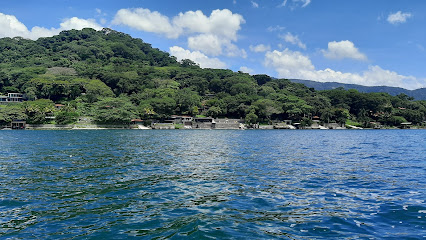
Restaurante Solsticio
Experience authentic Salvadoran flavors in a serene lakeside setting at Restaurante Solsticio in Santa Ana.
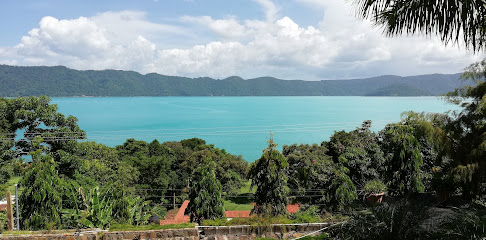
Unmissable attractions to see
Ecoparque El Espino
Explore Ecoparque El Espino, an ecological park in El Salvador, where nature and adventure await for every traveler seeking a unique experience.
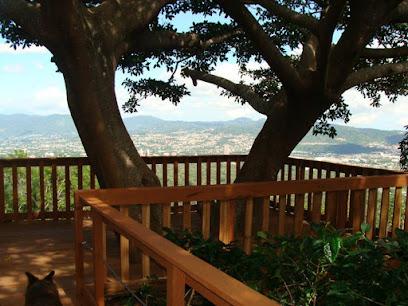
Military Museum of the Armed Forces of El Salvador
Explore the rich military history of El Salvador at the Military Museum of the Armed Forces, featuring extensive exhibits and engaging narratives.
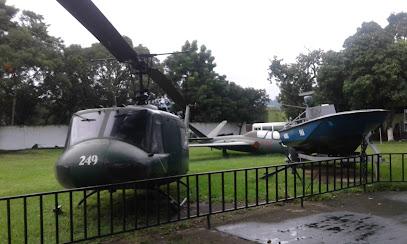
El Salto de Malacatiupán
Experience the breathtaking beauty of El Salto de Malacatiupán, a stunning waterfall in Ahuachapan, El Salvador, perfect for nature lovers and adventure seekers.
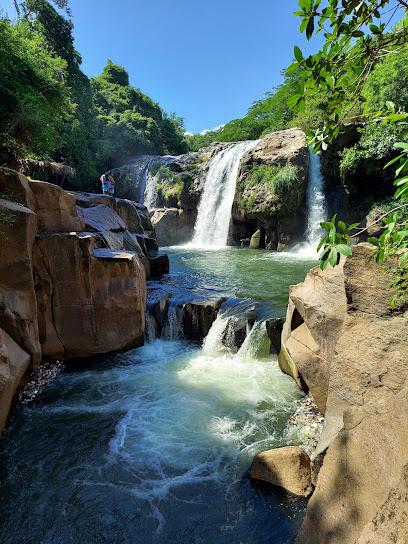
Basilica Sagrado Corazon
Explore the Basilica Sagrado Corazon in San Salvador, a stunning neo-Gothic basilica rich in history and spiritual significance, perfect for tourists and pilgrims alike.
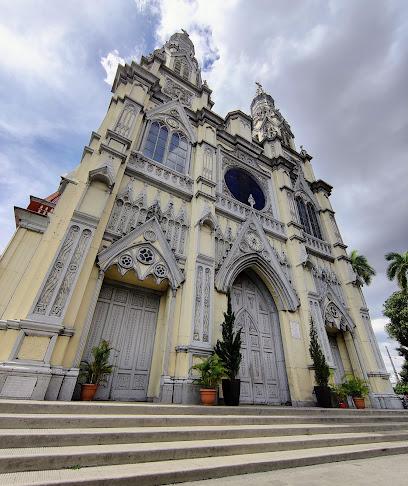
Chorros de la Calera
Explore the enchanting waterfalls and vibrant nature at Chorros de la Calera, a must-visit destination in El Salvador.
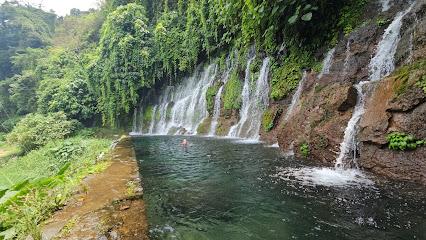
Club de El Salvador
Experience the breathtaking beauty and cultural charm of El Salvador at Club de El Salvador, a premier tourist attraction in the heart of nature.
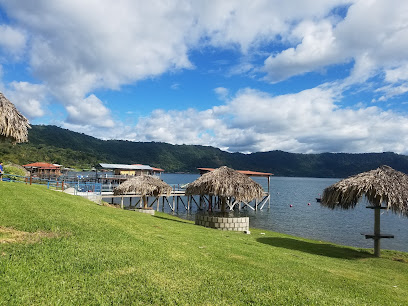
Museo y Biblioteca Luis Alfaro Durán
Discover El Salvador's cultural treasures at Museo y Biblioteca Luis Alfaro Durán, a captivating museum and library in the heart of San Salvador.
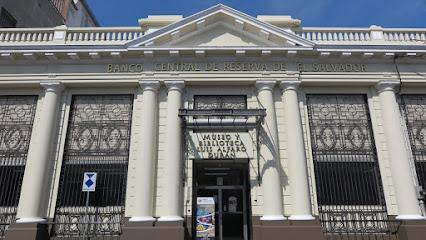
CES Lago de Coatepeque
Experience the tranquility and beauty of CES Lago de Coatepeque, a breathtaking lake destination perfect for relaxation and adventure in El Salvador.
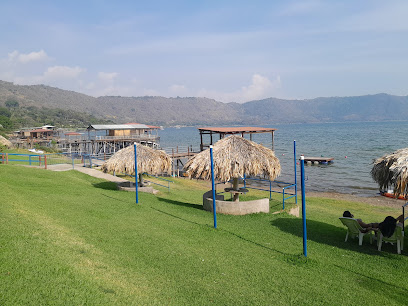
Altavista lakes, Lago Coatepeque
Explore the serene beauty of Altavista Lakes at Lago Coatepeque, a perfect getaway for nature lovers and adventure seekers in El Porvenir.

Essential places to dine
La Pampa Restaurant
Experience authentic Argentinian cuisine at La Pampa Restaurant in El Congo – where every bite tells a flavorful story.
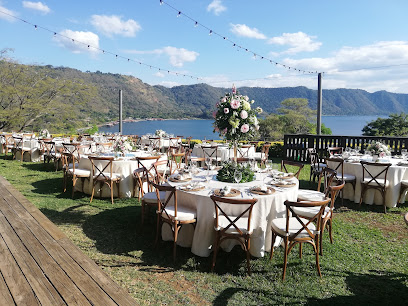
Restaurante Las Palmeras
Experience exquisite dining with breathtaking views at Restaurante Las Palmeras near Lago de Coatepeque in El Salvador.
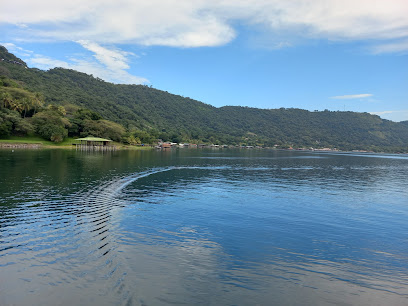
Restaurante Vista Lago
Experience exquisite dining at Restaurante Vista Lago in El Congo—where culinary delights meet breathtaking lake views.
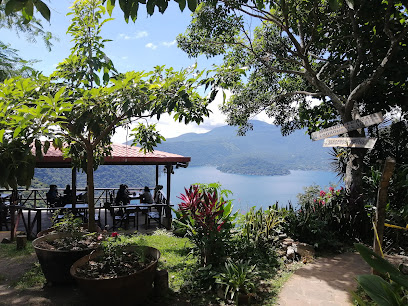
La Octava Maravilla Restaurante & Bar
Discover La Octava Maravilla Restaurante & Bar: A culinary haven on Lake Coatepeque offering local flavors and breathtaking views.

Restaurante El Faro del Lago
Discover exquisite dining at Restaurante El Faro del Lago, where local flavors meet breathtaking views by Lago de Coatepeque.
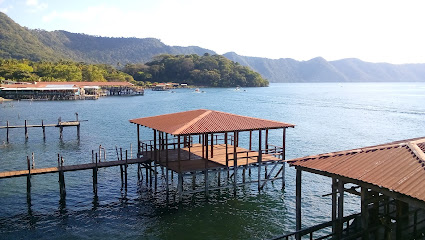
Tekunal Lago De Coatepeque
Experience authentic Salvadoran cuisine at Tekunal Lago De Coatepeque while enjoying stunning lake views in Santa Ana.

Rancho Alegre Coatepeque
Experience authentic Salvadoran cuisine amidst stunning landscapes at Rancho Alegre Coatepeque – a culinary gem in El Congo.
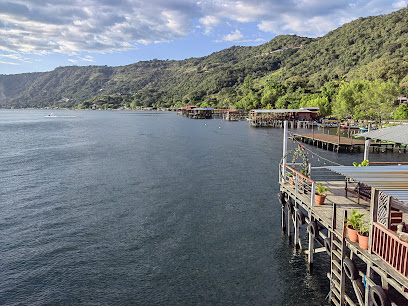
Los Asaditos De Coatepeque
Experience the vibrant flavors of El Salvador at Los Asaditos De Coatepeque – where every bite tells a story.
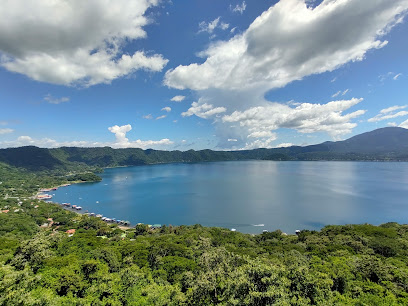
El Gran Mirador 2
Experience authentic Salvadoran flavors at El Gran Mirador 2 while enjoying breathtaking views in El Congo.
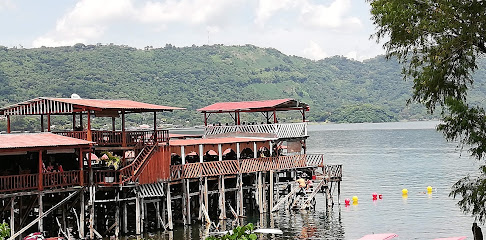
El Gran Mirador 1
Experience breathtaking views and authentic Salvadoran flavors at El Gran Mirador 1 in picturesque El Congo.

Restaurante Patricar
Experience authentic Salvadoran flavors at Restaurante Patricar near Lago de Coatepeque – a culinary delight in a stunning lakeside setting.
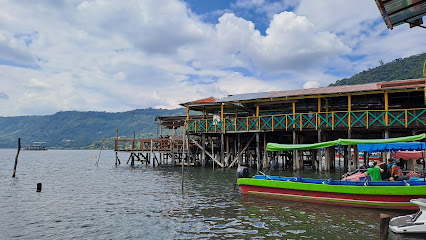
Restaurante Los Leones
Discover the essence of traditional grilling at Restaurante Los Leones, where flavors meet hospitality in every bite.
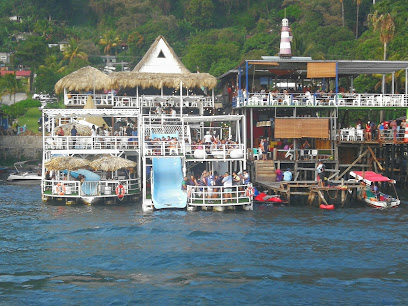
RESTAURANTE RANCHO ALEGRE 2
Experience authentic Salvadoran cuisine at Restaurante Rancho Alegre 2 with stunning lake views and a welcoming atmosphere.

Restaurante, Hostal & Bar Xtream Lago de Coatepeque
Discover relaxation at Restaurante, Hostal & Bar Xtream Lago de Coatepeque - where culinary delights meet stunning lakeside views.
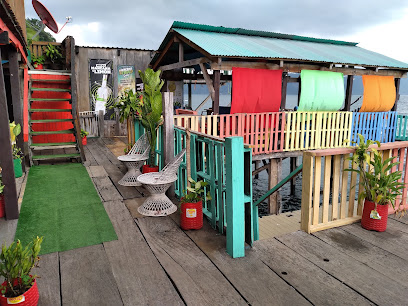
Restaurante Solsticio
Experience authentic Salvadoran cuisine at Restaurante Solsticio in Santa Ana - where local flavors meet stunning views.
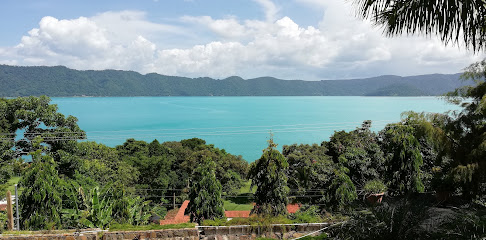
Markets, malls and hidden boutiques
Lago de Coatepeque
Experience the breathtaking beauty of Lago de Coatepeque, a serene volcanic lake perfect for adventure, relaxation, and unforgettable memories in El Salvador.

Cardedeu Hotel
Experience unparalleled comfort and stunning natural beauty at Cardedeu Hotel in Coatepeque, a perfect destination for relaxation and events.

Cardedeu Residence
Discover the serene charm of Cardedeu Residence, a perfect blend of comfort and hospitality in Santa Ana, El Salvador.
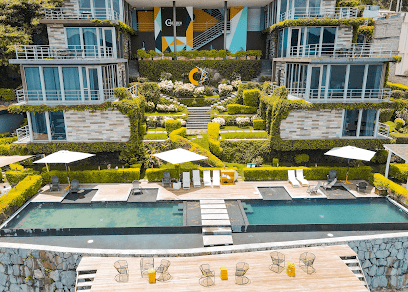
Almacenes Tropigas
Discover the perfect blend of electronics and furniture at Almacenes Tropigas in Santa Ana - your shopping paradise in El Salvador.
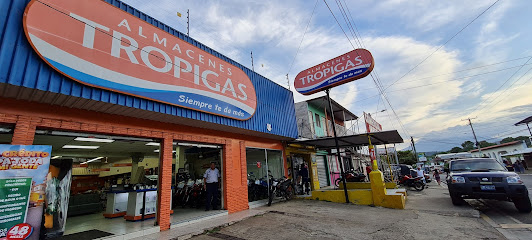
Bellas Novias & Boutique
Explore El Congo's premier bridal shop, Bellas Novias & Boutique, featuring stunning dresses for every occasion and exceptional personalized service.

Coatepeque Lake Cabinets
Experience the tranquil beauty of Coatepeque Lake Cabinets, a perfect escape for nature lovers and families in El Salvador.
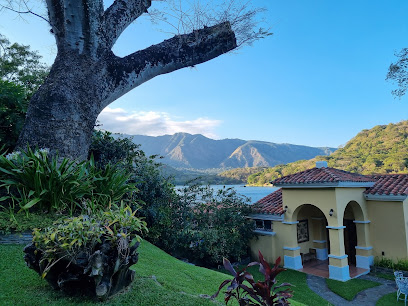
Plaza Coatepeque
Discover Plaza Coatepeque: A vibrant shopping mall in Flor Amarilla Arriba offering a blend of shopping, dining, and cultural experiences.
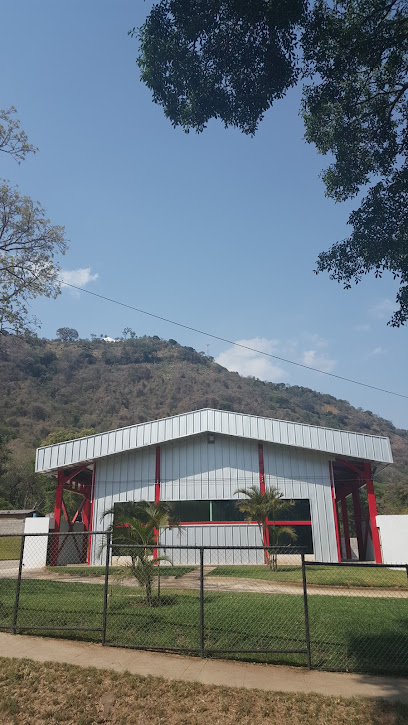
Librería y recargas Samantha
Explore the charm of Librería y Recargas Samantha, a must-visit bookstore in Cantón Los Pinos, El Congo, celebrating literature and local culture.

Lovely boutique
Explore the Lovely Boutique in El Congo, where local artistry meets fashion in a charming shopping experience.
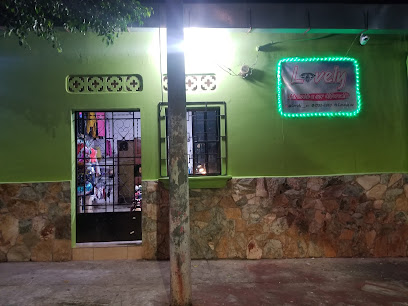
ABA decoración
Explore ABA Decoración in El Congo for unique handcrafted gifts and a true taste of Salvadoran artistry.

Tienda Yoli
Discover the vibrant culture of El Salvador at Tienda Yoli, your go-to store for authentic crafts and local delicacies in El Congo.
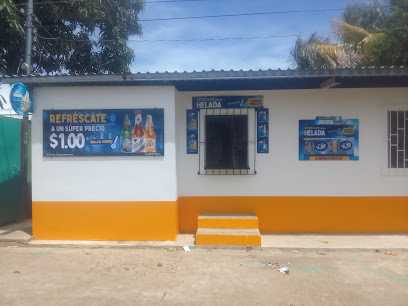
MiniPotsSV
Explore MiniPotsSV in El Congo for exquisite handcrafted home goods that capture the essence of El Salvador's rich culture.

Cactus Primavera
Explore the vibrant world of cacti and succulents at Cactus Primavera in El Congo, a serene garden center perfect for plant lovers.
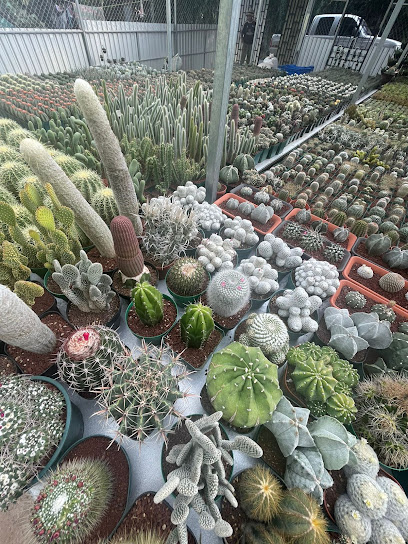
El Buen Precio
Visit El Buen Precio for all your travel essentials and local snacks in Santa Ana, the gateway to stunning Lago de Coatepeque.

TIENDA ISAÍ
Explore the charm of Coatepeque at TIENDA ISAÍ, where unique gifts and local craftsmanship come together in a delightful shopping experience.
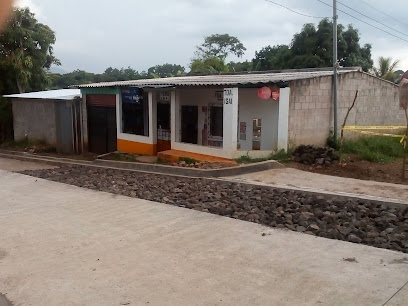
Essential bars & hidden hideouts
Restaurante Vista Lago
Experience exquisite dining at Restaurante Vista Lago in El Congo, where breathtaking views meet delightful cuisine, perfect for every traveler.
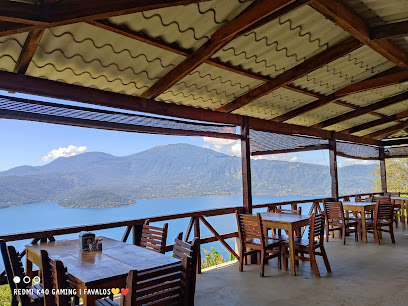
La Octava Maravilla Restaurante & Bar
Experience the culinary delights and stunning views of Lago de Coatepeque at La Octava Maravilla Restaurante & Bar.
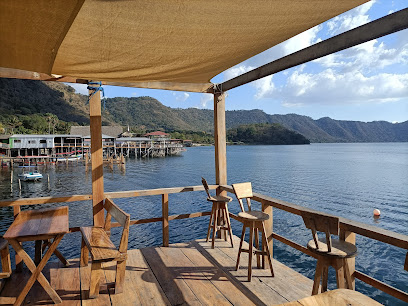
Restaurante El Faro del Lago
Experience stunning lakeside dining at Restaurante El Faro del Lago, where exquisite cuisine meets breathtaking views of Lago de Coatepeque.
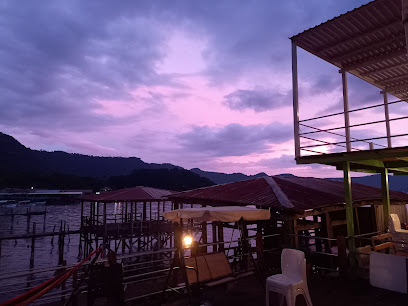
Tekunal Lago De Coatepeque
Indulge in authentic Salvadoran cuisine with breathtaking views at Tekunal Lago De Coatepeque, a culinary gem near the stunning lake.
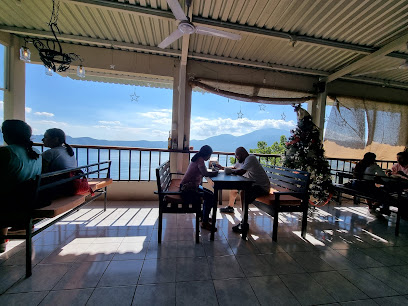
El Gran Mirador 2
Discover El Gran Mirador 2, a culinary delight in El Congo offering delicious local dishes and breathtaking views for an unforgettable dining experience.

Restaurante Patricar
Discover the authentic tastes of El Salvador at Restaurante Patricar, a lakeside haven offering delicious meals and stunning views.
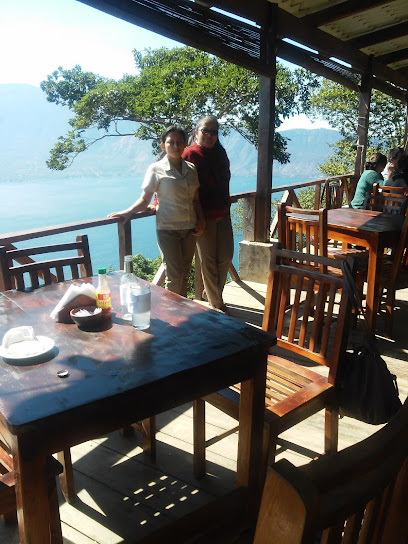
Restaurante Los Leones
Experience the vibrant taste of El Salvador at Restaurante Los Leones, a scenic grill offering delicious dishes and stunning lake views.
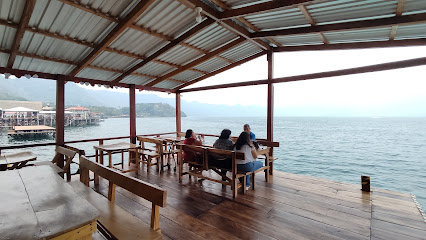
Restaurante, Hostal & Bar Xtream Lago de Coatepeque
Discover the perfect blend of dining, accommodation, and adventure at Restaurante, Hostal & Bar Xtream Lago de Coatepeque.
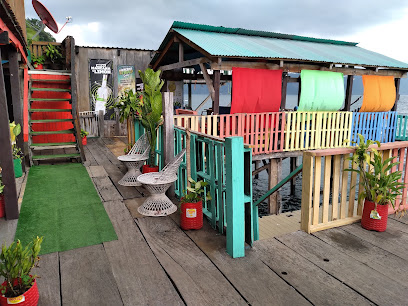
Restaurante Solsticio
Experience the vibrant flavors of El Salvador at Restaurante Solsticio in Santa Ana, where fresh ingredients meet stunning views for an unforgettable dining experience.
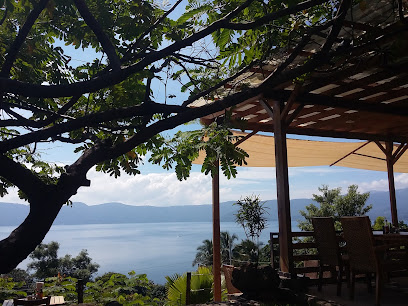
Restaurante Moctezuma Bar & Discoteca
Experience the vibrant atmosphere and authentic Salvadoran cuisine at Restaurante Moctezuma Bar & Discoteca near Lake Coatepeque.

Lago Coatepeque
Explore the tranquil beauty of Lago Coatepeque, a volcanic lake in El Salvador known for its stunning views and a perfect spot for outdoor adventures.

Chula vista
Discover the vibrant nightlife at Chula Vista, a premier bar in El Congo, offering a unique blend of local culture and refreshing drinks for every palate.
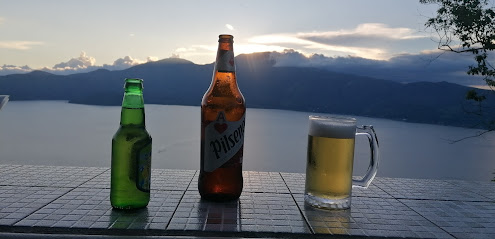
Tiki Island Hostal y Restaurante Lago Coatepeque
Experience the beauty of Lago Coatepeque at Tiki Island Hostal y Restaurante, where adventure meets relaxation in an unforgettable setting.
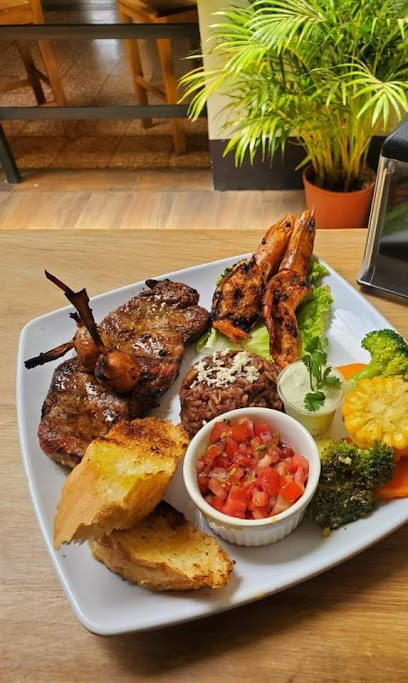
Bar & Restaurante El Cadejo
Experience the flavors and vibrant atmosphere of Bar & Restaurante El Cadejo, a must-visit spot by Lake Ilopango in El Salvador.
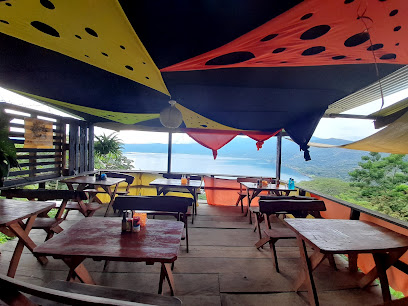
Restaurante Marlene
Experience authentic Salvadoran cuisine at Restaurante Marlene, where every meal is paired with breathtaking views of Lake Coatepeque.
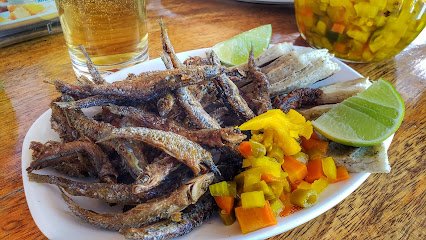
Local Phrases about Lake Coatepeque
-
- HelloHola
[oh-lah] - GoodbyeAdiós
[ah-dyohs] - YesSí
[see] - NoNo
[noh] - Please/You're welcomePor favor/De nada
[pohr fah-vohr/deh nah-dah] - Thank youGracias
[grah-syahs] - Excuse me/SorryDisculpe/Lo siento
[dees-kool-pe/loh syen-toh] - How are you?¿Cómo estás?
[koh-moh ehs-tahs] - Fine. And you?Bien. ¿Y tú?
[byen. ee too] - Do you speak English?¿Hablas inglés?
[ah-blahs een-glehs] - I don't understandNo entiendo
[noh ehn-tyen-doh]
- HelloHola
-
- I'd like to see the menu, pleaseMe gustaría ver el menú, por favor
[meh goos-tah-ree-ah behr ehl meh-noo pohr fah-vohr] - I don't eat meatNo como carne
[noh koh-moh kahr-neh] - Cheers!¡Salud!
[sah-loohd] - I would like to pay, pleaseMe gustaría pagar, por favor
[meh goos-tah-ree-ah pah-gahr pohr fah-vohr]
- I'd like to see the menu, pleaseMe gustaría ver el menú, por favor
-
- Help!¡Ayuda!
[ah-yoo-dah] - Go away!¡Vete!
[veh-teh] - Call the Police!¡Llama a la Policía!
[yah-mah ah lah poh-lee-see-ah] - Call a doctor!¡Llama a un doctor!
[yah-mah ah oon dohk-tohr] - I'm lostEstoy perdido
[ehs-toy pehr-dee-doh] - I'm illEstoy enfermo
[ehs-toy ehn-fehr-moh]
- Help!¡Ayuda!
-
- I'd like to buy...Me gustaría comprar...
[meh goos-tah-ree-ah kohm-prahr] - I'm just lookingSolo estoy mirando
[soh-loh ehs-toy meer-ahn-doh] - How much is it?¿Cuánto cuesta?
[kwan-toh kwes-tah] - That's too expensiveEso es demasiado caro
[eh-soh ehs deh-mah-syah-doh kah-roh] - Can you lower the price?¿Puede bajar el precio?
[pweh-deh bah-hahr ehl pree-syoh]
- I'd like to buy...Me gustaría comprar...
-
- What time is it?¿Qué hora es?
[keh oh-rah ehs] - It's one o'clockEs la una
[ehs lah oo-nah] - Half past (10)Media hora (10)
[meh-dyah oh-rah (deez)] - MorningMañana
[mah-nyah-nah] - AfternoonTarde
[tahr-deh] - EveningNoche
[noh-cheh] - YesterdayAyer
[ah-yehr] - TodayHoy
[oy] - TomorrowMañana
[mah-nyah-nah] - 1Uno
[oo-noh] - 2Dos
[dohs] - 3Tres
[trehs] - 4Cuatro
[kwah-troh] - 5Cinco
[seen-koh] - 6Seis
[says] - 7Siete
[syeh-teh] - 8Ocho
[oh-choh] - 9Nueve
[nweh-veh] - 10Diez
[dyehs]
- What time is it?¿Qué hora es?
-
- Where's a/the...?¿Dónde está el/la...?
[dohn-deh ehs-tah ehl/lah] - What's the address?¿Cuál es la dirección?
[kwal ehs lah dee-rehk-syohn] - Can you show me (on the map)?¿Puede mostrarme (en el mapa)?
[pweh-deh mohs-trahr-meh (ehn ehl mah-pah)] - When's the next (bus)?¿Cuándo es el próximo (autobús)?
[kwan-doh ehs ehl proh-ksee-moh (ow-toh-boos)] - A ticket (to ....)Un boleto (a ....)
[oon boh-leh-toh (ah)]
- Where's a/the...?¿Dónde está el/la...?
History of Lake Coatepeque
-
Lake Coatepeque is a stunning caldera lake located in the department of Santa Ana, El Salvador. It was formed approximately 72,000 years ago following a series of volcanic eruptions and subsequent collapses. The caldera spans about 26 square kilometers, and its formation is a testament to the region's dynamic geological history.
-
The area around Lake Coatepeque was inhabited by indigenous peoples long before the arrival of the Spanish. The Pipil people, part of the Nahua ethnic group, were among the prominent inhabitants. They referred to the lake as 'Cohuatépec,' meaning 'Hill of Snakes' in the Nahuatl language, highlighting its cultural significance and the rich biodiversity of the region.
-
In the early 16th century, the Spanish arrived in the region, leading to significant changes. The conquest of the Pipil and other indigenous groups brought about a new era marked by colonial exploitation and the imposition of European culture and religion. The lake's name was Hispanicized to 'Coatepeque,' a reflection of the colonial influence.
-
Throughout its history, Lake Coatepeque has been a site of religious and cultural importance. Indigenous rituals were often performed along its shores, and many locals believe that the lake holds spiritual significance. This deep cultural connection persists to this day, with various festivals and ceremonies taking place around the lake.
-
In recent decades, Lake Coatepeque has become a popular destination for both local and international tourists. The development of infrastructure, including hotels, restaurants, and recreational facilities, has transformed the lake into a vibrant hub for leisure and adventure. Despite this, efforts are ongoing to preserve its natural beauty and cultural heritage.
-
Recognizing the ecological importance of Lake Coatepeque, various environmental conservation initiatives have been implemented. These efforts aim to protect the lake's water quality, biodiversity, and surrounding landscapes from the impacts of tourism and development. Conservation groups work alongside local communities to ensure the sustainable use and preservation of this natural wonder.
Lake Coatepeque Essentials
-
Lake Coatepeque is located in the Santa Ana department of El Salvador, about 18 kilometers south of the city of Santa Ana and roughly 60 kilometers west of San Salvador, the capital. The nearest international airport is Monseñor Óscar Arnulfo Romero International Airport (SAL) in San Salvador. From the airport, you can rent a car, take a taxi, or use a shuttle service to reach the lake. The drive from the airport typically takes around 1.5 to 2 hours. Public buses also run between San Salvador and Santa Ana, from where you can take a local bus or taxi to the lake.
-
While exploring Lake Coatepeque, renting a car is the most convenient option for flexibility and ease of travel, especially if you plan to visit surrounding areas. Local taxis are available, but it's advisable to agree on the fare before starting your trip. Public buses are an affordable option, but they can be crowded and less reliable in terms of schedules. For short distances around the lake, walking or renting a bicycle can be enjoyable and practical.
-
The official currency in El Salvador is the US Dollar (USD). Credit and debit cards are widely accepted in hotels, restaurants, and larger shops around Lake Coatepeque. However, it is advisable to carry some cash, especially for small purchases, street vendors, and in more rural areas. ATMs are available in nearby towns like Santa Ana, so it’s a good idea to withdraw sufficient cash before heading to the lake.
-
Lake Coatepeque is generally a safe destination for tourists, but standard precautions should be taken. Avoid displaying valuable items, and keep an eye on your belongings, especially in crowded areas. It is advisable to avoid traveling alone at night and to stick to well-populated and well-lit areas. While the lake itself is safe, nearby cities like Santa Ana have neighborhoods with higher crime rates. Always ask locals or your accommodation for advice on which areas to avoid.
-
In case of emergency, dial 911 for immediate assistance. There is a police presence in the area, and medical facilities are available in nearby Santa Ana. For minor health issues, there are pharmacies where you can purchase over-the-counter medications. It is strongly recommended to have travel insurance that covers medical emergencies. For more serious conditions, consider traveling to a hospital in San Salvador, which has more comprehensive medical facilities.
-
Fashion: Do dress comfortably and modestly, especially when visiting local communities. Avoid wearing overly revealing clothing. Religion: Do respect local religious customs and traditions, particularly if you visit churches or religious sites. Public Transport: Do be polite and considerate to other passengers. Don’t eat or drink on public transport. Greetings: Do greet locals with a friendly 'Hola' or 'Buenos días/tardes'. A handshake is common, but a smile and nod are also appreciated. Eating & Drinking: Do try the local cuisine and accept food offerings graciously. Don’t refuse hospitality, as it can be considered impolite.
-
To experience Lake Coatepeque like a local, try visiting on weekends when Salvadorans often come to enjoy the lake. Rent a kayak or paddleboard to explore the lake’s crystal-clear waters. Visit local eateries to sample traditional Salvadoran dishes like pupusas. Engage with locals who are often friendly and willing to share their knowledge about the area. Don’t miss the opportunity to enjoy a boat ride to Isla Teopan, a small island in the lake with historical significance.
Trending Landmarks in Lake Coatepeque
-
Parque Nacional Cerro Verde
-
Parque Arqueológico Tazumal
-
La Pampa Restaurant
-
Restaurante Las Palmeras
-
Lago de Coatepeque
-
La Octava Maravilla Restaurante & Bar
-
Cardedeu Hotel
-
Captain Morgan Hostel
-
Cardedeu Residence
-
Rancho Alegre Coatepeque
-
Club de El Salvador
-
Lajamaya, Lake Coatepeque
-
Equinoccio Hotel
-
Isla Teopán
-
Restaurante Solsticio
Nearby Cities to Lake Coatepeque
-
Things To Do in Chalchuapa
-
Things To Do in San Salvador
-
Things To Do in La Libertad
-
Things To Do in Suchitoto
-
Things To Do in Copán Ruinas
-
Things To Do in Gracias
-
Things To Do in Santa Rosa de Copán
-
Things To Do in Guatemala City
-
Things To Do in Antigua Guatemala
-
Things To Do in San Miguel
-
Things To Do in Panajachel
-
Things To Do in Lake Atitlán
-
Things To Do in Chichicastenango
-
Things To Do in Rio Dulce
-
Things To Do in Puerto Barrios






